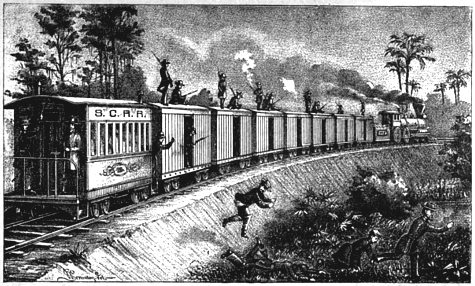 On the property on which the Folger Shakespeare Library sits, there once stood a row of grand houses known as Grant’s Row, after the architect and builder who created them. The buildings were the grandest on the Hill when they were built, in 1871, and would have probably still be considered such if they had not had to give way for the Folger in 1929.
On the property on which the Folger Shakespeare Library sits, there once stood a row of grand houses known as Grant’s Row, after the architect and builder who created them. The buildings were the grandest on the Hill when they were built, in 1871, and would have probably still be considered such if they had not had to give way for the Folger in 1929.
Today, I will look a bit at the man behind the row, while next week’s column will be about the buildings themselves.
Albert Grant was a Civil War hero. Born in Maine in 1820, he made his way across the country as a builder, stopping in Massachusetts, Illinois, and Iowa before settling in Milwaukee. Along the way he married, and he and his wife had four children, the youngest of which, Walter, was born in 1859 in Wisconsin. Along the way, he also built a large number of buildings, including the Bay States Cotton Mill in Lawrence, Massachusetts. He became famous there for instituting the 10-hour work day, and also became a leader in the trades union movement.
While he was living in Wisconsin, the Civil War broke out. Grant immediately rallied a number of like-minded businessmen who offered their services as presidential guards. Their services were declared unnecessary, and so he and his fellow would-be guards returned to Wisconsin, where every one eventually became an officer in the Union army.
Grant, for his part, was offered the commission of Lieutenant-Colonel in the 19th Wisconsin Regiment, but declined and instead joined as a Captain. He was captured during the Battle for Petersburg, and put into Charleston jail. With him in the jail was one James Madison Drake, who tells the story in his book “Fast and Loose in Dixie” (New York, Authors’, 1880)
At the beginning of October, 1864, Drake became aware that something was afoot (there was indeed – Sherman and his army were marching towards Charleston) and decided that he would rather not wait around to see what his Confederate captors would do to him. He convinced Grant, as well as two other Captains, Todd from New Jersey, and Lewis from Connecticut, to join him in escaping. While they were being moved by train to another jail, Drake and his cohorts managed to ingratiate themselves with their captors through the liberal application of molasses cakes and cigars, all the while managing to remove the percussion caps from all rifles in the car, rendering them useless.

The leap from the train. From James Madison Drake “Fast and Loose in Dixie” (New York, Authors', 1880)
The train slowed to cross a river, and before it had a chance to speed up on the other side, Captain Todd pretended to be sick – and slid out of the car. Grant and Lewis followed immediately, and Drake used the moment when the Sergeant guarding them was reacting to leap out himself.
The four escapees soon found themselves in a swamp, and Grant almost drowned in a pond, but was pulled out by the others. They managed to avoid capture, in spite of having dogs set on them in large numbers. They spent a month and a half walking through Dixie, having all sorts of adventures (the book is, to be honest, almost too good to be true) and finally managed to make it behind Union lines after walking about a thousand miles.
For Captain Albert Grant, this was enough. His war was over, and he decided to move to Washington DC, and resume his old career. How that worked out, is for next week’s episode.
